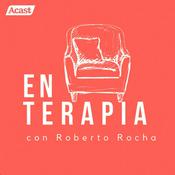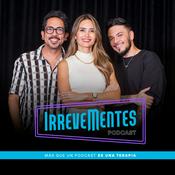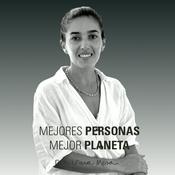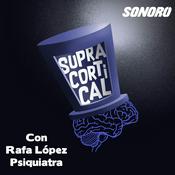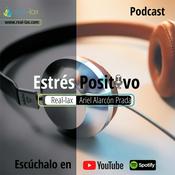36 episodios

Episode 39: Sterile, Strategic, and Bold- Transforming Biomanufacturing
30/10/2025 | 23 min
In this engaging conversation, Rebecca Bradford shares her passion for travel and how it influences her leadership at ATCC. She outlines a bold vision for the future, emphasizing the importance of a new biomanufacturing facility aimed at revitalizing domestic production and supporting health needs. Becky highlights the facility's design for sterility and efficiency, as well as the challenges of weather and material availability. With a focus on collaboration with big pharma and rigorous standards, she reflects on her leadership philosophy and personal goals. Her commitment to innovation and quality promises a significant impact on ATCC's future.

Episode 38: Global Vision, Local Impact- A Journey to Biotech Leadership
30/10/2025 | 19 min
In this episode of 'Behind the Biology', Rebecca Bradford, senior vice president of ATCC Federal Solutions, shares her leadership philosophy and career journey. She discusses the evolution of her management style from team-focused approaches to strategic decision-making as her responsibilities grew. Becky reflects on overcoming imposter syndrome through mentorship and the importance of asking questions to engage others. Her love for travel has also shaped her perspectives, emphasizing the need for adaptability in the biotech field. The conversation concludes with her insights on the future of biotech and the necessity for customization in scientific advancements.

Episode 37: Curiosity, Crisis, and the Call to Lead
29/10/2025 | 30 min
In this episode, Becky Bradford, a senior vice president at ATCC, shares her inspiring journey from a science-loving child in Oklahoma to a leader in biomanufacturing. With over twenty years of experience, she reflects on her early career during the human genome sequencing boom and her diverse background in various biology fields. Becky emphasizes the importance of operational knowledge, quality materials, and educational opportunities in advancing her career. She highlights ATCC's commitment to quality and adaptability in responding to health crises, showcasing the significance of resilience in biosecurity. Her story illustrates the vital role of science in national preparedness and global health.

Episode 33: Fueling the Future- BAT, Bile Acids, and Beyond
22/7/2025 | 24 min
In this episode, Dr. Aaron Cypess discusses the future of brown adipose tissue (BAT) and white adipose tissue (WAT) research at the NIDDK, focusing on three pillars: integrative physiology, noninvasive imaging, and clinical trials. First, there's integrative physiology, where scientists use cell lines to dig into how fat cells work, how they burn energy, and how they respond to obesity treatments. Then there's noninvasive imaging—think PET-CT and MRI—which helps researchers actually see where fat is in the body and how active it is. And finally, clinical trials are testing treatments like mirabegron to see if they can activate brown fat and boost metabolic health. Dr. Cypess highlights the importance how taking this combined approach to studying BAT and WAT physiology can open doors to real, meaningful benefits to patients.

Episode 32: BAT Breakthroughs and the Bridge from Bench-to-Bedside
15/7/2025 | 20 min
In this episode, Dr. Aaron Cypess discusses two pivotal moments that led him to change his approach to research. Initially planning to major in biology, he was encouraged to study chemistry, which provided a strong foundation in precision and quantitative analysis. During his endocrinology fellowship, Dr. Cypess shifted his focus to clinically relevant research, leading to his entry into the Clinical Investigator Training Program. This program allowed him to leverage his dual MD and PhD training to study human brown adipose tissue (BAT). Dr. Cypess also reflects on the pressures of being a physician-researcher and how the supportive environment at the NIH's NIDDK has enabled him to continue his impactful research. He highlights the benefits of the NIH's collaborative environment and resources, such as the NIH Clinical Center and the post-baccalaureate fellowship program, which have been instrumental in his research on BAT and its implications for human health.
Más podcasts de Salud y forma física
Podcasts a la moda de Salud y forma física
Acerca de ATCC's Podcast: Behind the Biology
Escucha ATCC's Podcast: Behind the Biology, Durmiendo y muchos más podcasts de todo el mundo con la aplicación de radio.net
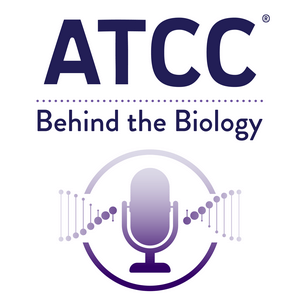
Descarga la app gratuita: radio.net
- Añadir radios y podcasts a favoritos
- Transmisión por Wi-Fi y Bluetooth
- Carplay & Android Auto compatible
- Muchas otras funciones de la app
Descarga la app gratuita: radio.net
- Añadir radios y podcasts a favoritos
- Transmisión por Wi-Fi y Bluetooth
- Carplay & Android Auto compatible
- Muchas otras funciones de la app


ATCC's Podcast: Behind the Biology
Descarga la app,
Escucha.

